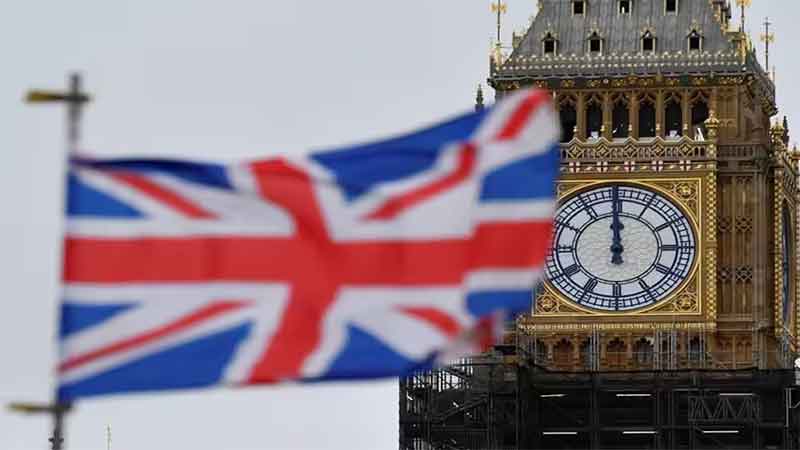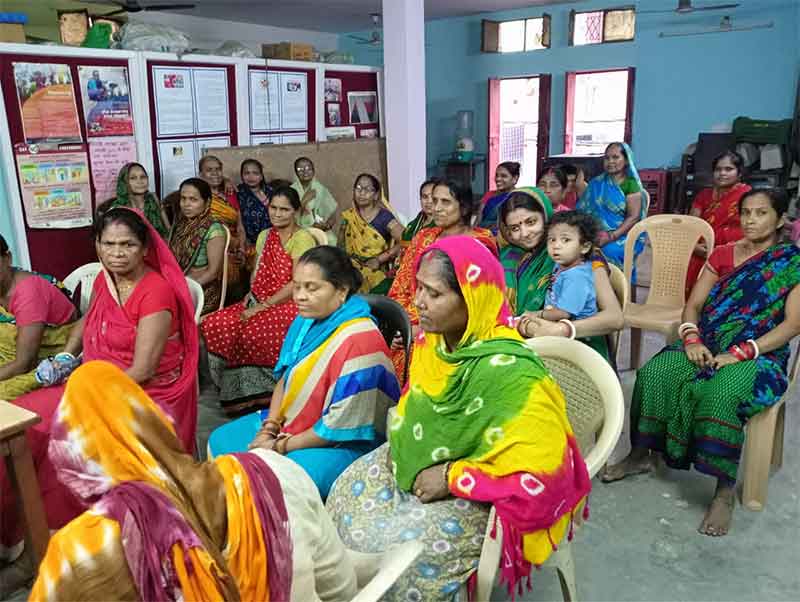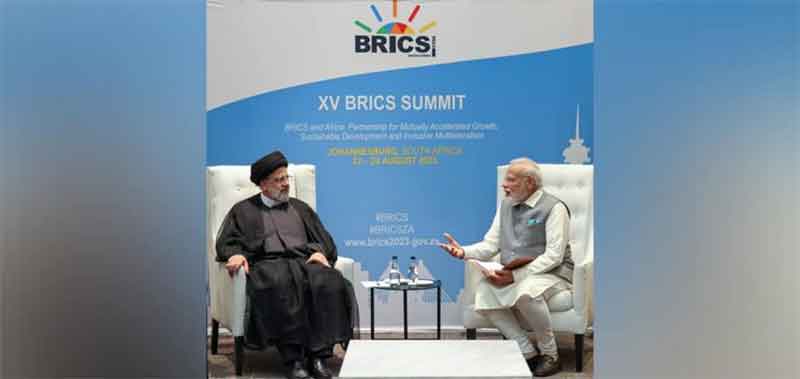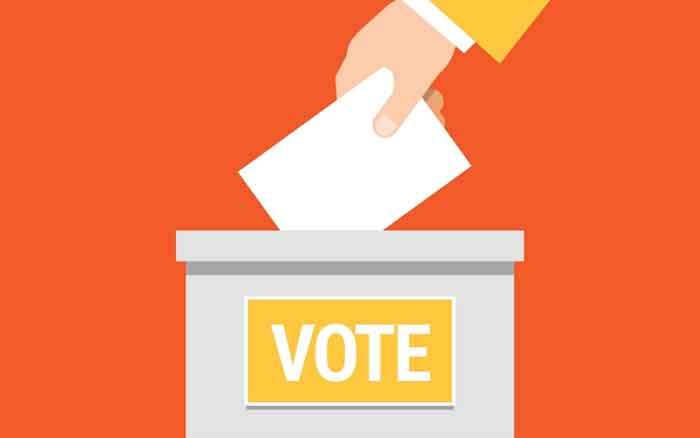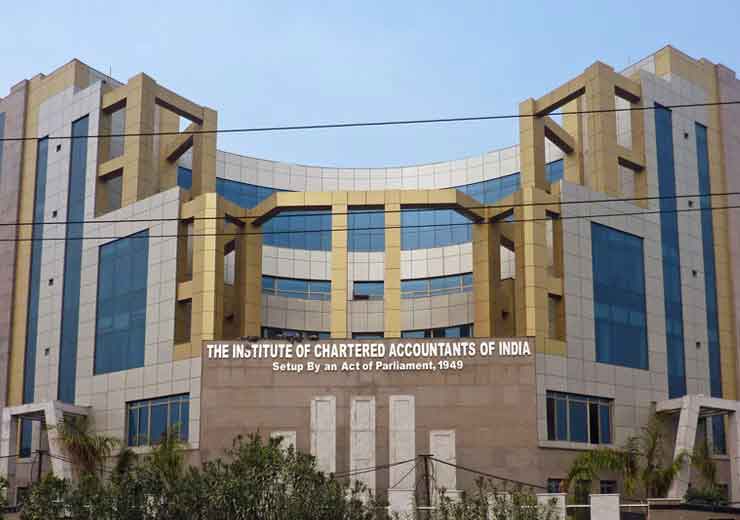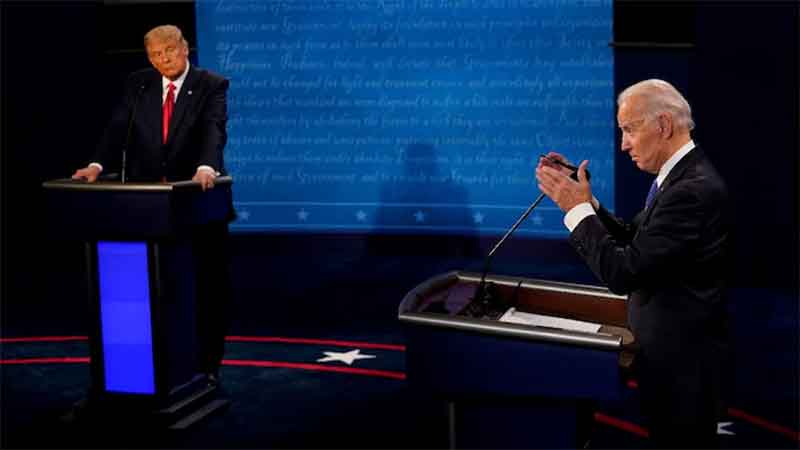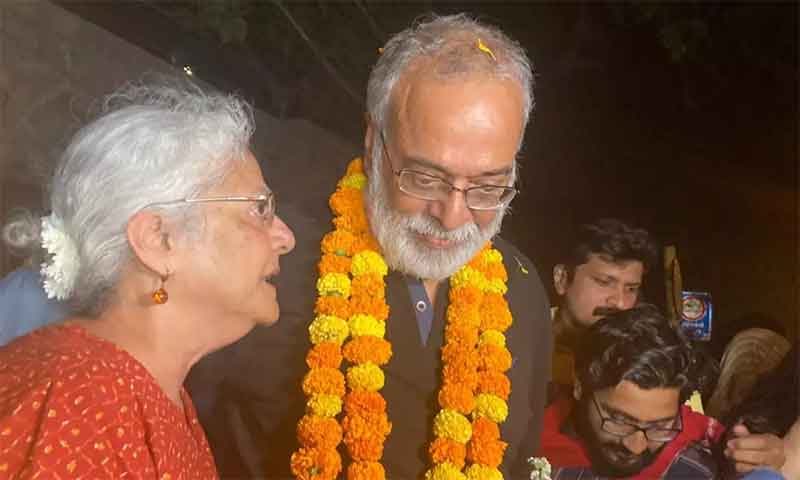
The Supreme Court has supported the law regarding arrests. However, the misuse of arrest powers against journalists and political opponents, like in the case of NewsClick founder Prabir Purkayastha, is concerning. While the rule of law has prevailed in some cases, the lack of support for those without economic, political, or legal resources remains a problem.
Very precious freedom is secured with the most valuable ‘rule of law’ through the judgment of the apex court on 15th May 2024 by declaring the arrest and remand of journalist online under the draconian Unlawful Activities (Prevention) Act (UAPA) by the Delhi Police as “invalid in the eyes of law”. The allegation is that the NewsClick editor, using Chinese funding to promote “anti-national propaganda” through digital media, was arrested by the Delhi Police Special Cell on 3rd October 2023. The fact that a charge sheet was filed in the case would not validate the illegality committed at the time of arrest.
In the case of Vijay Madanlal Choudhary vs Union of India (https://indiankanoon.org/ doc/14485072/), Senior Advocate Abhishek Manu Singhvi highlighted inconsistencies in how the Enforcement Directorate (ED) provides grounds for arrest. Sometimes written grounds are given, while other times, they are only read out or shown briefly to the accused, making it hard for them to prepare their defence. This inconsistency can prejudice the accused’s ability to defend themselves during bail applications and trials.
The Supreme Court noted that under Section 3 of the PMLA, an accused can be charged with money laundering if they are connected to the proceeds of crime. The investigation must gather facts and determine if these proceeds were generated from a scheduled offence. According to the Supreme Court, without following the requirements of the Cr.P.C. and established legal procedures, such actions violate the law.
In the Vijay, the Supreme Court highlighted several issues with how the Enforcement Directorate (ED) operates under the Prevention of Money Laundering Act (PMLA). Here are the key points:
1. ECIR and Summons: The ED can summon accused persons based on an Enforcement Case Information Report (ECIR) without the accused knowing the allegations. Under Section 50 of the PMLA, the accused must make statements that are admissible as evidence. It creates an unfair situation as the accused might not be aware of the charges against them, unlike the explicit provisions in the Cr.P.C. (Criminal Procedure Code) for summoning accused persons (Section 41A) and witnesses (Section 160).
2. Article 14 Violation: The Supreme Court noted that the ED is not following Chapter XII of the Cr.P.C., which outlines investigation principles. This lack of adherence means no clear legal criteria or guiding principles, potentially violating Article 14 of the Indian Constitution, which guarantees equality before the law.
3. Dilution of Safeguards: The court mentioned that safeguards initially provided by Section 173 of the Cr.P.C. in the original 2002 PMLA have been weakened by amendments. Notably, amendments in 2009 and 2019 reduced protections. For example, Sections 5 and 17 changes diluted certain safeguards, and the 2019 amendment removed a crucial protection in Section 17(1).
4. Prosecution Requirements: The court pointed out that filing a charge sheet for a predicate offence is essential under Section 19 of the PMLA, which requires reasons to believe someone is guilty. Summoning individuals under Section 50 should only happen after registering the ECIR. Any prosecution attempt without these steps is inconsistent with the PMLA and violates fundamental rights.
5. Need for Cr.P.C. Compliance: It was argued that following the Cr.P.C. is crucial to ensure procedures established by law. Investigations must adhere to Sections 154 or 155 of the Cr.P.C. to maintain constitutional safeguards of reasonableness and fairness.
In essence, the Supreme Court criticized the ED’s inconsistent and unfair practices under the PMLA, emphasizing the need for adherence to established legal procedures to protect individual rights.
Unguided missile
The Supreme Court has criticized the Enforcement Directorate (ED) for its misuse of power under the Prevention of Money Laundering Act (PMLA). It is like an “unguided missile” in the ruling proposition. Here are some more main points:
Cr.P.C. Applicability: Section 65 of the PMLA states that the Criminal Procedure Code (Cr.P.C.) should apply, but this is not followed properly. The other violations noted are as follows: A) Non-registration of FIRs. B) Lack of a case diary. C) Restricted access to the Enforcement Case Information Report (ECIR). D) Violation of Sections 161 and 41A of the Cr.P.C. and E) Lack of magisterial permission under Section 155 of the Cr.P.C. This misuse of power violates Articles 14 (equality before the law) and 21 (protection of life and personal liberty) of the Indian Constitution.
Inadequate Safeguards: The PMLA lacks adequate safeguards compared to the Cr.P.C.: 1) No equivalents to Sections 41-41D, 46, 49, 50, 51, 55, 55A, 58, and 60A of the Cr.P.C., 2) Limited safeguards in PMLA to Sections 16-19 and 50, and 3) Strict bail conditions under Section 45 of the PMLA resemble preventive detention, which has more safeguards under Articles 22(3) to 22(7) of the Constitution. The post-2019 Amendment states that money laundering is a cognizable and non-bailable offence, reducing checks and balances at the ED’s discretion.
In another significant case, Pankaj Bansal vs Union of India (2023 SCC OnLine SC 1244, (2023 INSC 866), the Supreme Court emphasized that the ED must provide written grounds for arrest. These points illustrate how the ED’s practices under the PMLA have been critiqued for lacking procedural fairness and violating constitutional rights.
Liberty was hanging by a thread
The Supreme Court’s judgment on 15th May 2024, in the case of Prabir Purkayastha v. State (2024 INSC 414), highlighted significant issues with the way the Enforcement Directorate (ED) and police handled arrests under the Prevention of Money Laundering Act (PMLA) and the Unlawful Activities (Prevention) Act (UAPA). Justice Mehta of SC, the author of the judgement Bench, explained that any lapse would be a violation of Article 22(5) of the Constitution, which mandates that a person under detention should be communicated the grounds of the detention order and allowed to make a representation against the detention at the earliest opportunity. Further, he said that communication of grounds of arrest or detention in writing by the investigating agency or police was “sacrosanct and cannot be breached under any situation”. “Non-compliance with this constitutional requirement and statutory mandate would render custody or detention illegal. The Supreme Court called that Purkayastha was left heavily handicapped when his liberty was hanging by a thread on 4th October morning. Significant aspects of judgement are:
Illegal Arrest: The ED’s arrest of Prabir Purkayastha was unlawful because the grounds for his arrest were not communicated in writing. It violates Section 19(1) of the PMLA, which requires the ED to inform the arrested person of the grounds of arrest in a written format.
Violation of Rights: The accused must receive written grounds for arrest. Non-cooperation during an investigation cannot always be presumed guilty. The ED must not use its power to arrest maliciously or with bad intent.
To circumvent the due process of law: Justice Mehta, in a scathing criticism, said: “This entire exercise was done clandestinely and was nothing but a blatant attempt to circumvent the due process of law; to confine the accused to police custody without informing him the grounds on which he has been arrested; deprive the accused of the opportunity to avail himself of the services of the legal practitioner of his choice to oppose the prayer for police custody remand, seek bail and also to mislead the court”. It was difficult to describe the attack on fundamental rights, i.e., the Constitution of India.
The most abused by the ruling power is the fundamental right under Article 22(1). The Supreme Court proclaimed: “The right to be informed about the grounds of arrest flows from Article 22(1) (an arrested person shall be informed of the grounds of arrest and allowed to consult a lawyer of his or her choice) of the Constitution, and any infringement of this fundamental right would vitiate the process of arrest and remand.” Justice Mehta and Justice B R Gavai of the Bench.
What about Constitutional values?
It’s fine. But is it enough to preach Constitutional values, like the wonderful poetic judgments of former SC judges like VR Krishna Iyer? In South India, it is called ‘Pravachanam’—ethical preaching based on epic good deeds. Thousand assumed to be ‘devotees’ enjoy it in a temple but forget immediately.
Where is the remedy? We learn in law colleges that even if a flash of light is thrown on a man in a theatre itself, it is enough to impose compensation under the law of Torts from Indo-British jurisprudence, which says, “a violation of a legal right of someone, whether results in a legal injury or not, gives rise to an action in tort for compensation.” Is there no consequence to the blatant violation of Constitutional crime?
Where there is a right, and shall there be a remedy?
Where there is a right, there shall be a remedy- is another remarkable ancient jurisprudential principle. But there are remedies for journalists (and ordinary people also) who languished in prison for months together. It was a clandestine manner, a blatant attempt to circumvent the due process of law, considered strong stricture in the arrest of Prabir, especially a non-communication for grounds of detention of this journalist. Where is the Constitutional remedy?
Dr M Sridhar Acharyulu, LL.D., Ph.D., M.C.J., Professor of Law, Hyderabad





